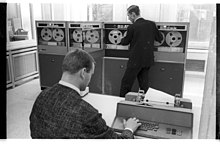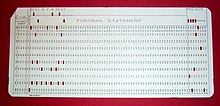Computer Operation Level-3 Suggestion V-8
Written Test Computer Operation Level-3 Suggestion V-8 by Job Edu BD
First, test yourself with the following MCQs, if you can’t do it, you can check the answer by clicking on the answer button.
Computer Operation Level-3 Suggestion V-8.
1.In MS-Word, for what dose ruler help?
- to set indents
- to change page margins
- to set tabs
- All of Above
2.MS Excel file can NOT be directly exported as……
- TEXT
- PPT
- CSV
3.Which of the following software is used for making resume?
- DEV C
- MS Excel
- MS Word
- Java
4.The Greater Than sign () is an example of ………Operator
- Arithmetic (+, -, *, /, %)
- Logical (<,>, =)
- Conditional
- Greater
5.CTRL+G is used to
- Open go to Dialog box
- Open find and Replace Dialog box with activating go to tab
- Open page setup Dialog box activating go to tab
- Open paragraph Dialog box activating Tab
Note: CTRL+H is use for Find and Replace dialog
6.Which One is the common application software?
- Note pad
- Mac
- Microsoft
- Android
7.Superscript, Subscript, outline, emboss, engrave are known as?
- Font Style
- Word Art
- Font Effect
- Text Effect
8.Internet is
- A worldwide interconnected network
- A worldwide interconnected network of Computers which use a Common protocol to communicate with one another
- A local computer networks
- An interconnected network of Computer
9.A program that is used in view websites is called
- A Web viewer
- Browse
- Spreadsheet
- Word Processor
10.Which Operation you will perform if you need to move a block of text?
- Copy and paste
- Cut and Paste
- paste and Delete
- paste and Cut
11.Which one Is not a file attribute?
- Date
- Time
- Size
- Font format
12. WWW stands for?
- World Wide Web.
- World Web Wide.
- Web World Wide.
- None of this.
13. The effect applied to display when slides changes in slide show view is:
- Slide Animation
- Custom Animation
- Custom Transition
- Slide Transition.
14.Which one is not a type of document in MS-Excel?
- Calendar
- Monthly budget
- Salary sheet
- Business letter
15. What one is a data type in excel?
- Text
- Alignment
- Font
- Border
16. To write the formula in excel, which symbol is needed firstly?
- $
- *
- =
- ;
17. In excel Wrap Text is used for____________.
- Keeping text in a line
- Moving text in a line
- Keeping text withing the cell
- None of above
18. A spreadsheet is the best application for______________.
- Writing an information
- Handling simple accounts
- Producing a grid-referenced map
- Keeping an inventory of equipment used
19. Which one is not Unicode font?
- SutonnyMJ
- Nikosh
- Kalpurush
- Sonar bangla
20.Which one of the following is not a search engine?
- Bing
- Yahoo
- Windows
21. The process of transferring files from your computer to a computer on the Internet is called
- Uploading
- Forwarding
- FTP
- Downloading
22. Verification of a login name and password is known as:
- Configuration
- Accessibility
- Authentication
- Logging in
23.The slide that is used to introduce a topic and set the tone for the presentation is called the—
- Title slide
- Bullet slide
- Table slide
- Graph slide
24. The effect applied to display when slides changes in slide show view is:
- Slide Animation
- Custom Animation
- Custom Transition
- Slide Transition.
Short Questions-
25. Which is most common tool used to restrict access to computer system?
26. How many types of computer memory?
27. The smallest unit of data in a computer is ___.
28. URL stands for?
29. CPU stands for?
30. GUI stands for?
1.In MS-Word, for what dose ruler help?
C. to set tabs
2.MS Excel file can NOT be directly exported as……
C. PPT
3.Which of the following software is used for making resume?
C. MS Word
4.The Greater Than sign () is an example of ………Operator
B. Logical (<,>, =)
5.CTRL+G is used to
B. Open find and Replace Dialog box with activating go to tab
Note: CTRL+H is use for Find and Replace dialog
6.Which One is the common application software?
A. Note pad
7.Superscript, Subscript, outline, emboss, engrave are known as?
C. Font Effect
8.Internet is
B. A worldwide interconnected network of Computers which use a Common protocol to communicate with one another
9.A program that is used in view websites is called
B. Browse
10.Which Operation you will perform if you need to move a block of text?
B. Cut and Paste
11.Which one Is not a file attribute?
D. Font format
12. WWW stands for?
A. World Wide Web.
13. The effect applied to display when slides changes in slide show view is:
D. Slide Transition.
14.Which one is not a type of document in MS-Excel?
D. Business letter
15. What one is a data type in excel?
A. Text
16. To write the formula in excel, which symbol is needed firstly?
C. =
17. In excel Wrap Text is used for____________.
C. Keeping text withing the cell
18. A spreadsheet is the best application for______________.
B. Handling simple accounts
19. Which one is not Unicode font?
A. SutonnyMJ
20.Which one of the following is not a search engine?
D. Windows
21. The process of transferring files from your computer to a computer on the Internet is called
A. Uploading
22. Verification of a login name and password is known as:
C. Authentication
23.The slide that is used to introduce a topic and set the tone for the presentation is called the—
A. Title slide
24. The effect applied to display when slides changes in slide show view is:
D. Slide Transition.
Short Questions-
25. Which is most common tool used to restrict access to computer system?
Passwords
26. How many types of computer memory?
Computer memory is mainly of two types: primary and secondary
27. The smallest unit of data in a computer is ___.
bit.
28. URL stands for?
Uniform Resource Locator.
29. CPU stands for?
Central Processing Unit.
30. GUI stands for?
Graphical User Interface.
Try Now: Computer Operation Level-3 Vol-5
"You will pass just by asking the mentioned questions, it's not like that at all, but chances are upto 80% to get common. This is just a suggestion. This question is not copied from any board question"
Here are 50 common MS Word shortcut keys that can help improve your productivity while using the software:
1. Ctrl + A: Select all
2. Ctrl + B: Bold text
3. Ctrl + C: Copy selected text or object
4. Ctrl + D: Open the Font dialog box
5. Ctrl + E: Center text
6. Ctrl + F: Open the Find and Replace dialog box
7. Ctrl + G: Open the Go To dialog box
8. Ctrl + H: Open the Find and Replace dialog box (Replace tab)
9. Ctrl + I: Italicize text
10. Ctrl + J: Justify text
11. Ctrl + K: Insert hyperlink
12. Ctrl + L: Left-align text
13. Ctrl + M: Indent a paragraph from the left
14. Ctrl + N: Create a new document
15. Ctrl + O: Open a document
16. Ctrl + P: Print a document
17. Ctrl + Q: Remove paragraph formatting
18. Ctrl + R: Right-align text
19. Ctrl + S: Save a document
20. Ctrl + T: Create a hanging indent
21. Ctrl + U: Underline text
22. Ctrl + V: Paste copied text or object
23. Ctrl + W: Close a document
24. Ctrl + X: Cut selected text or object
25. Ctrl + Y: Redo an action
26. Ctrl + Z: Undo an action
27. Ctrl +1]: Increase font size
28. Ctrl + [: Decrease font size
29. Ctrl + Shift + D: Double underline text
30. Ctrl + Shift + F: Change font
31. Ctrl + Shift + G: Open the Word Count dialog box
32. Ctrl + Shift + H: Apply hidden text formatting
33. Ctrl + Shift + K: Apply the Format as Small Caps
34. Ctrl + Shift + L: Apply the List style
35. Ctrl + Shift + M: Remove a paragraph indent from the left
36. Ctrl + Shift + N: Apply the Normal style
37. Ctrl + Shift + P: Change the font size
38. Ctrl + Shift + Q: Apply the Quote style
39. Ctrl + Shift + S: Apply the Styles task pane
40. Ctrl + Shift + T: Decrease a hanging indent
41. Ctrl + Shift + W: Underline words but not spaces
42. Ctrl + Shift + X: Change the case of selected text
43. Alt + Ctrl + 1: Apply Heading 1 style
44. Alt + Ctrl + 2: Apply Heading 2 style
45. Alt + Ctrl + 3: Apply Heading 3 style
46. Alt + Ctrl + C: Copy formatting
47. Alt + Ctrl + R: Copy the format of selected text
48. Alt + Ctrl + T: Insert a current date and time
49. Alt + Shift + D: Insert a current date
50. Alt + Shift + T: Insert a current time
A computer operator is a role in IT which oversees the running of computer systems, ensuring that the machines, and computers are running properly. The job of a computer operator as defined by the United States Bureau of Labor Statistics is to “monitor and control … and respond to … enter commands … set controls on computer and peripheral devices. This Excludes Data Entry.”
Overview
The position has evolved from its beginnings in the punched card era. A Bureau of Labor Statistics report published in 2018 showed that, in the public sector, a major employer of those categorized as Computer Operator was United States Postal Service. In the private sector, companies involved in data processing, hosting, or related services employed computer operators at an even higher rate. The states with the highest employment for computer operators, as of 2018, are: New York, Texas, California, New Jersey, and Florida.
Job role description
The former role of a computer operator was to work with mainframe computers which required a great deal of management day-to-day including manually running batch jobs; however, now they often work with a variety of different systems and applications. The computer operator normally works in a server room or a data center, but can also work remotely so that they can operate systems across multiple sites. Most of their duties are taught on the job,[citation needed] as their job description will vary according to the systems they help to manage.
Responsibilities of a computer operator may include:
- Monitor and control electronic computer and peripheral electronic data processing equipment to process business, scientific, engineering, and other data according to operating instructions.
- Monitor and respond to operating and error messages.
- May enter commands at a computer terminal and set controls on computer and peripheral devices.
- Excludes “Computer Occupations” (15-1100) and “Data Entry Keyers” (43-9021).
The role also includes maintaining records and logging events, listing each backup that is run, each machine malfunction and program abnormal termination. Operators assist system administrators and programmers in testing and debugging of new systems and programs prior to their becoming production environments.
Modern-day computing has led to a greater proliferation of personal computers, with a rapid change from older mainframe systems to newer self-managing systems. This is reflected in the operator’s role. Tasks may include managing the backup systems, cycling tapes or other media, filling and maintaining printers. Overall the operator fills in as a lower level system administrator or operations analyst. Most operations departments work 24×7.
A computer operator also has knowledge of disaster recovery and business continuity procedures. Formerly, this would have meant sending physical data tapes offsite, but now the data is more than likely transmitted over computer networks.
Specializations
Console operator
A console operator interacts with a front panel or a multi-user system’s console
- entering system commands via a keyboard
- entering commands for a subsystem, e.g., HASP, via a keyboard
- replying to requests for information
- taking actions such as mounting computer tapes that were “pulled” by a tape librarian
- supervising a tape operator, especially when there is a non-specific mount request.
These individuals would be trained to use specialized equipment related to their duties.
Beyond the IBM System/360 era
One example of specific hardware used by a console operator is the IBM 3066 Model 2 system console, which included a light pen[citation needed] as an interface device. Other then-new features were:
- replaced “most switch, pushbutton, and indicator functions”
- as with the 165’s Model 1, had a microfiche document viewer, a feature introduced for the 360/85’s console.
A console printer (up to 85 characters per second) to provide hard copy was optional when the console was in display mode, and required when it was in printer-keyboard mode.[citation needed]
Peripherals operator
A peripherals operator uses dedicated peripheral equipment connected to computer(s) such as printers, scanners, or storage devices for data transfer to and/or from computers.
Tape operator

Historically, tape operators were in charge of swapping out reels of paper tape, reels of magnetic tape or magnetic tape cartridges that stored computer data or instructions.
Card reader operator

Depending on the type of card reader, either the “9-edge” or the “12-edge” was towards the card reader operator inserting the cards – but the deck of cards was always placed face down.
The United States Army’s wordings were:
- Load cards in hopper face down, 12 edge out, column 1 to the left (1977)
- Place cards in hopper face down with 12 edge to operator (1981)
- 12 edge / face down : IBM orientation.
- nine-edge (also face down) : some other card readers.
Printer operator
In addition to filing or delivering computer printouts, a printer operator at times loads standard or, as directed by a console operator or a remote console, specialized forms.
Tab operator

The tab operator (short for tabulating) would be responsible for preparing and operating tabulating machines to produce statistical results. Hardware such as the IBM 08x sorter series[citation needed] were called tabulating equipment. The 1980 census specifically counted Tab operators (“Tabulating-machine operator”).
Tape librarian
A tape librarian is responsible for the management, storage, and reporting involving data storage tapes. The tape librarian would develop and/or maintain an organization system for the storage and retrieval of tapes, and assist in disaster recovery. Additionally, the librarian would ensure the integrity of the tapes, and submit recommendations for replacement when needed. Some examples of equipment a tape librarian may work with are the IBM 3850.
Post review
Finding Your Post
NSQF / NTVQF Computer Operation Level-3 Suggestion V-8, NSQF NTVQF, Computer Operation Level-3 Suggestion V-8, Job Edu BD, NSDA BTEB, NSDA / BTEB Suggestion Vol-1
NSQF / NTVQF Computer Operation Level-3 Suggestion V-8, NSQF NTVQF, Computer Operation Level-3 Suggestion V-8, Job Edu BD, NSDA BTEB, NSDA / BTEB Suggestion Vol-1
NSQF / NTVQF Computer Operation Level-3 Suggestion V-8, NSQF NTVQF, Computer Operation Level-3 Suggestion V-8, Job Edu BD, NSDA BTEB, NSDA / BTEB Suggestion Vol-1
NSQF / NTVQF Computer Operation Level-3 Suggestion V-8, NSQF NTVQF, Computer Operation Level-3 Suggestion V-8, Job Edu BD, NSDA BTEB, NSDA / BTEB Suggestion Vol-1
NSQF / NTVQF Computer Operation Level-3 Suggestion V-8, NSQF NTVQF, Computer Operation Level-3 Suggestion V-8, Job Edu BD, NSDA BTEB, NSDA / BTEB Suggestion Vol-1
NSQF / NTVQF Computer Operation Level-3 Suggestion V-8, NSQF NTVQF, Computer Operation Level-3 Suggestion V-8, Job Edu BD, NSDA BTEB, NSDA / BTEB Suggestion Vol-1



